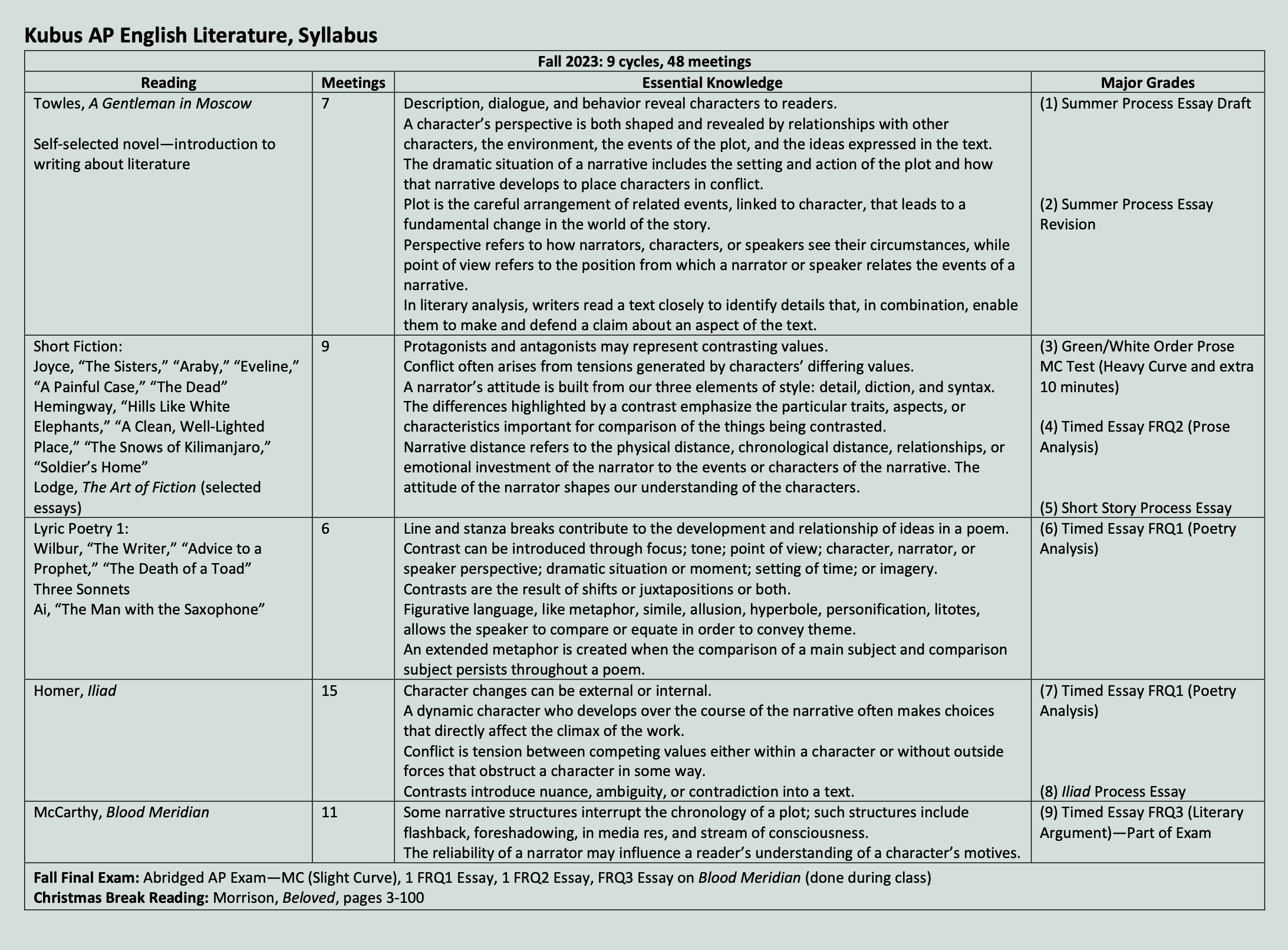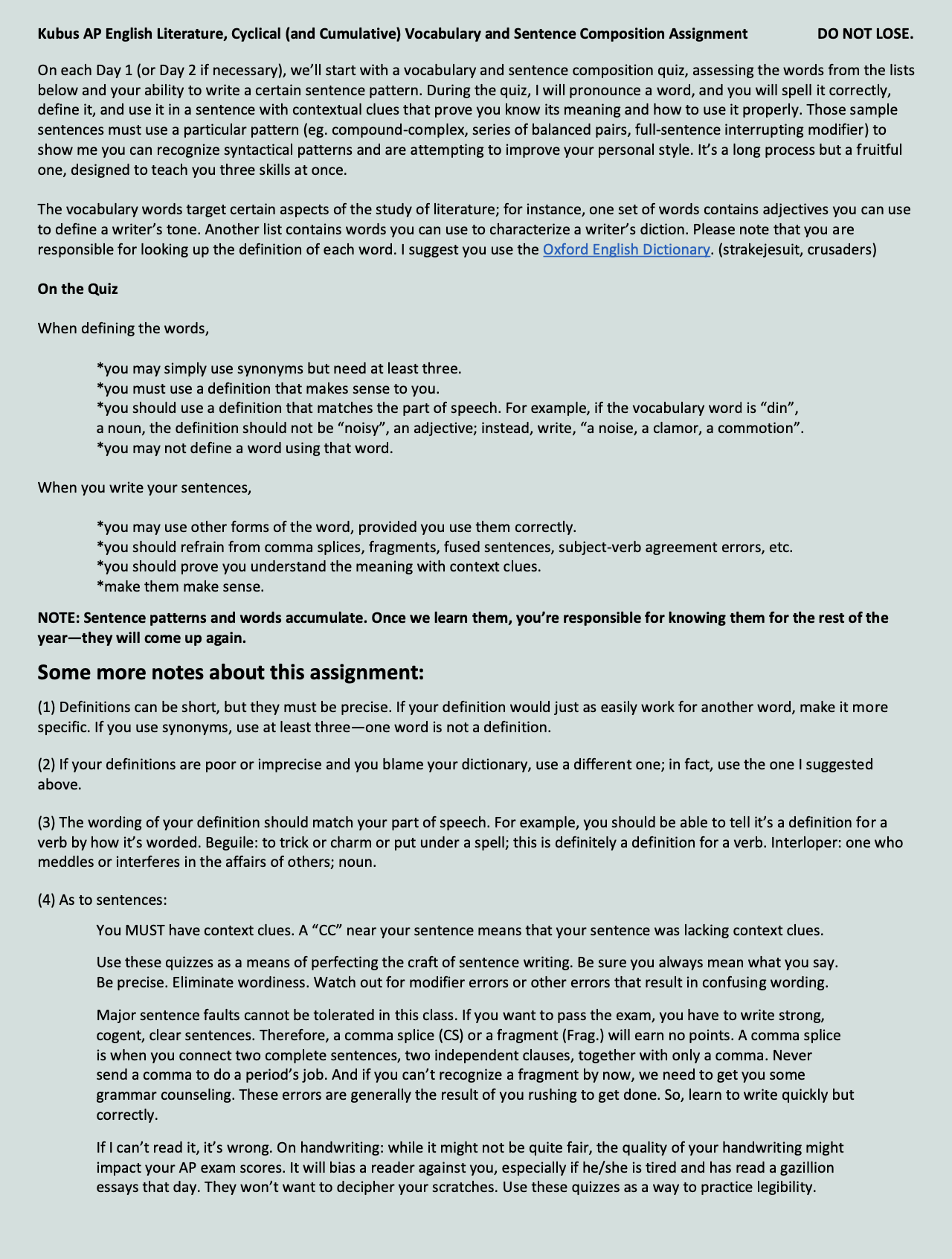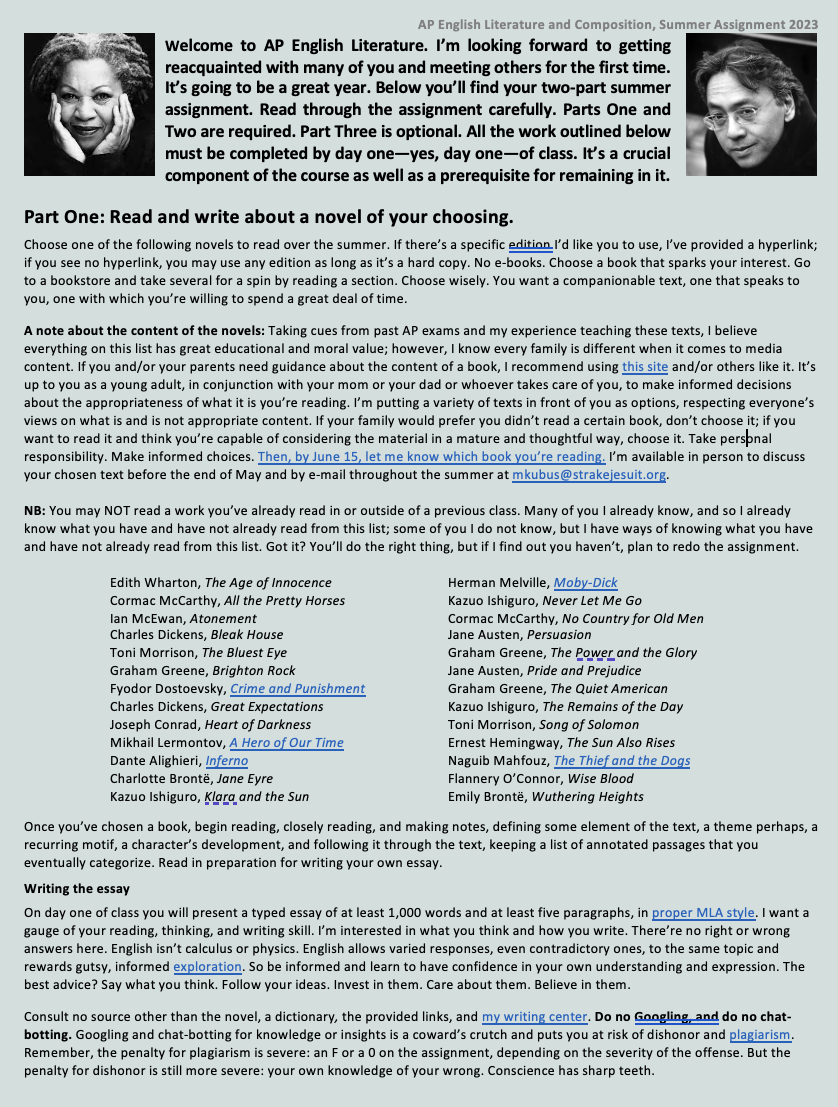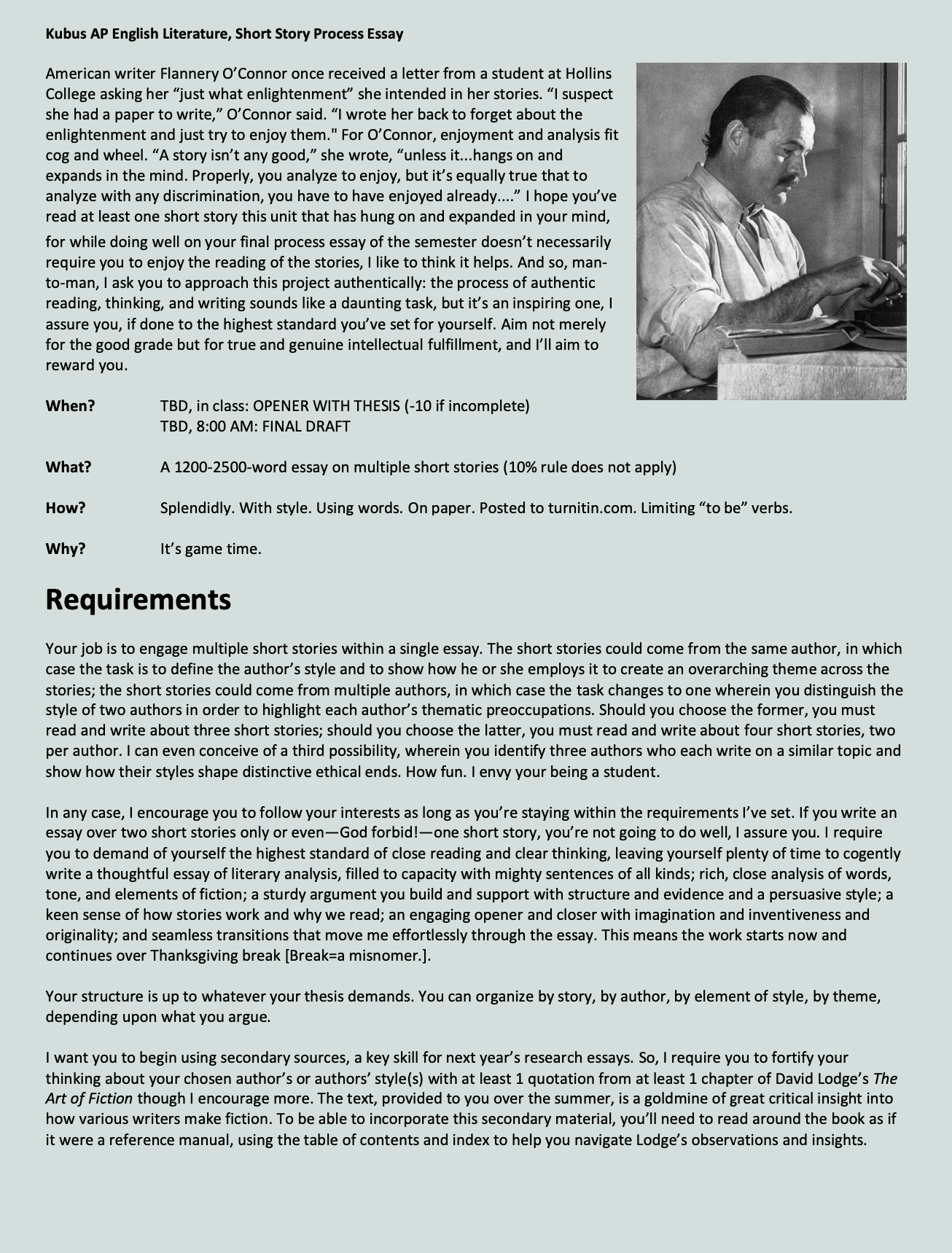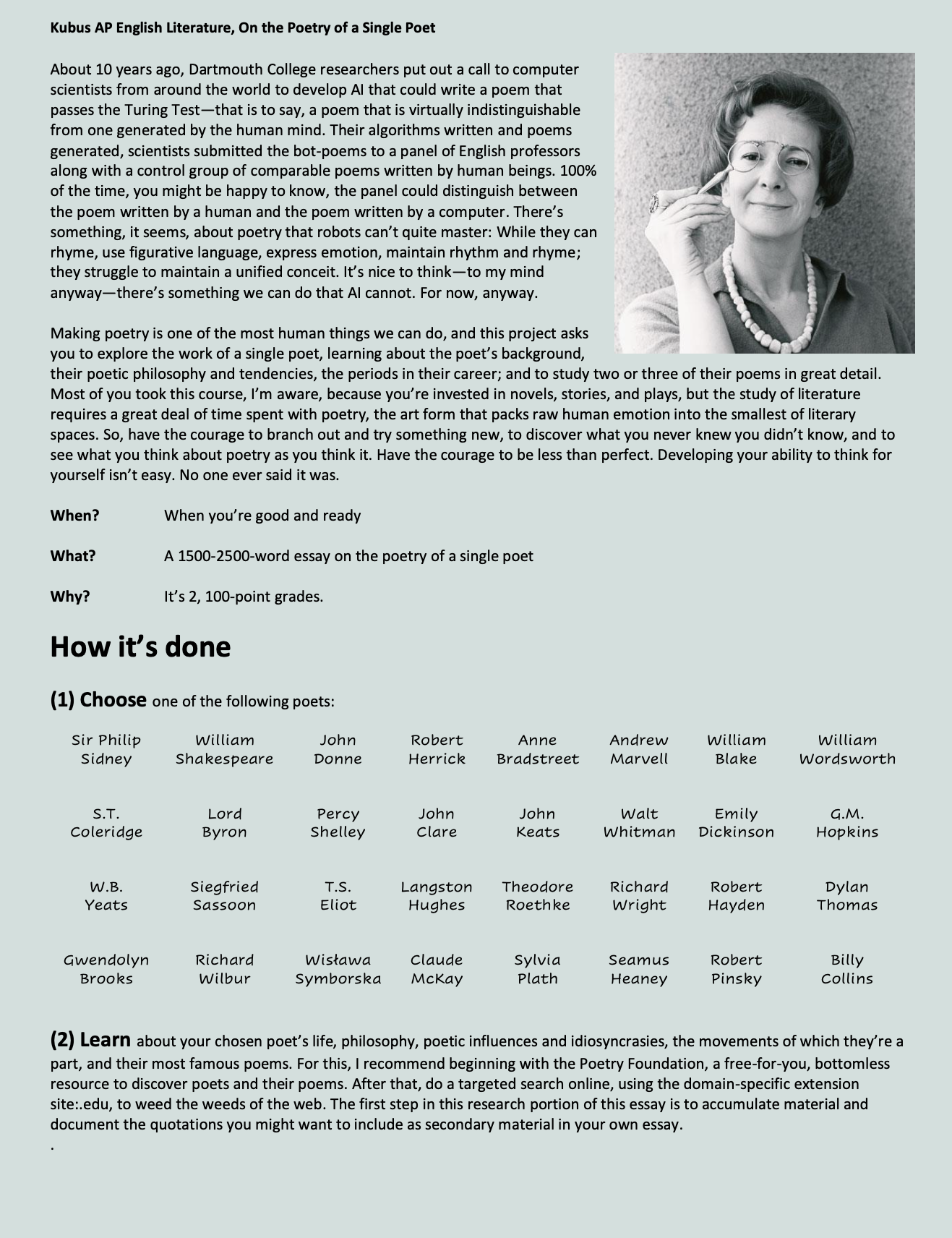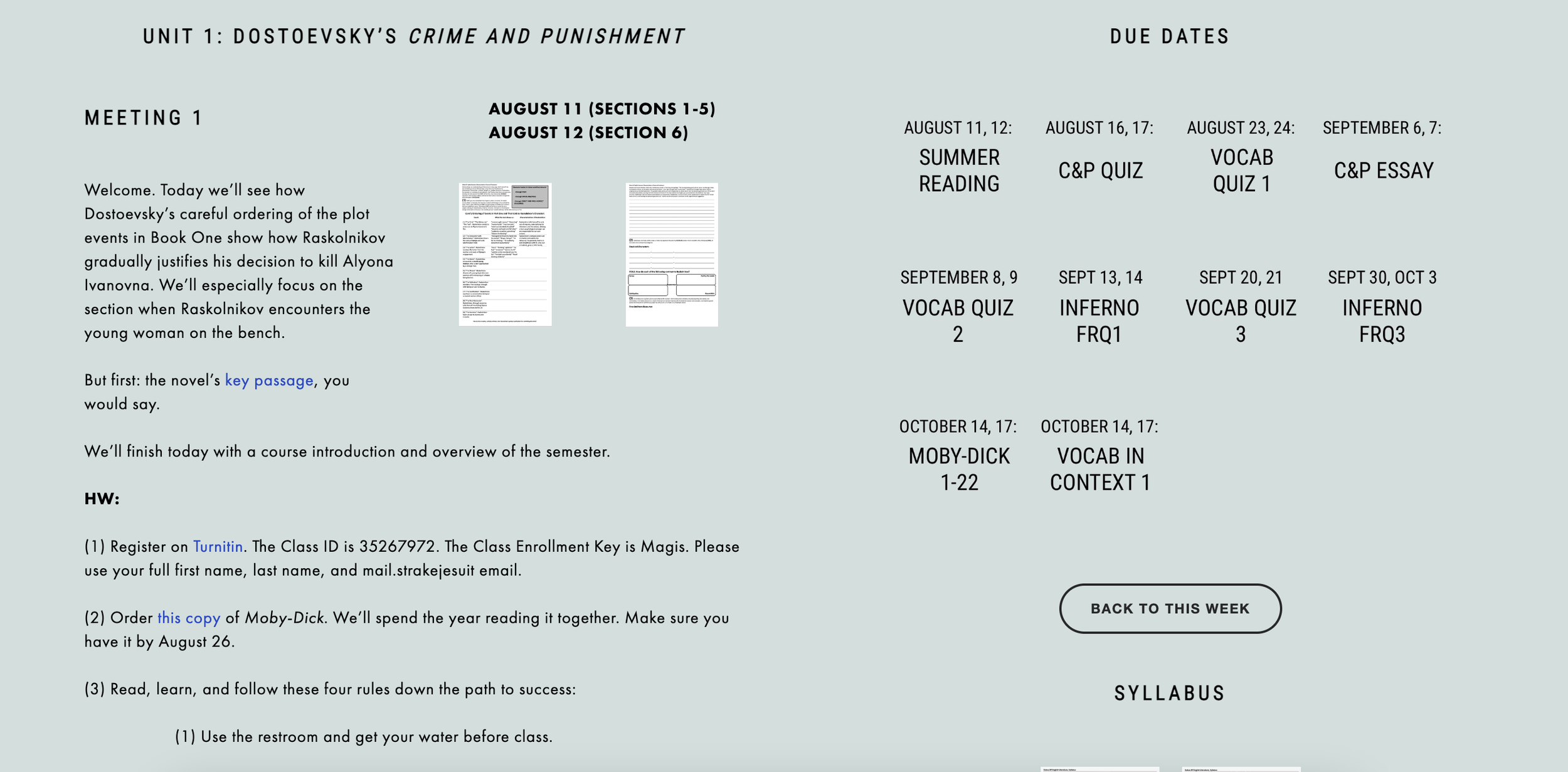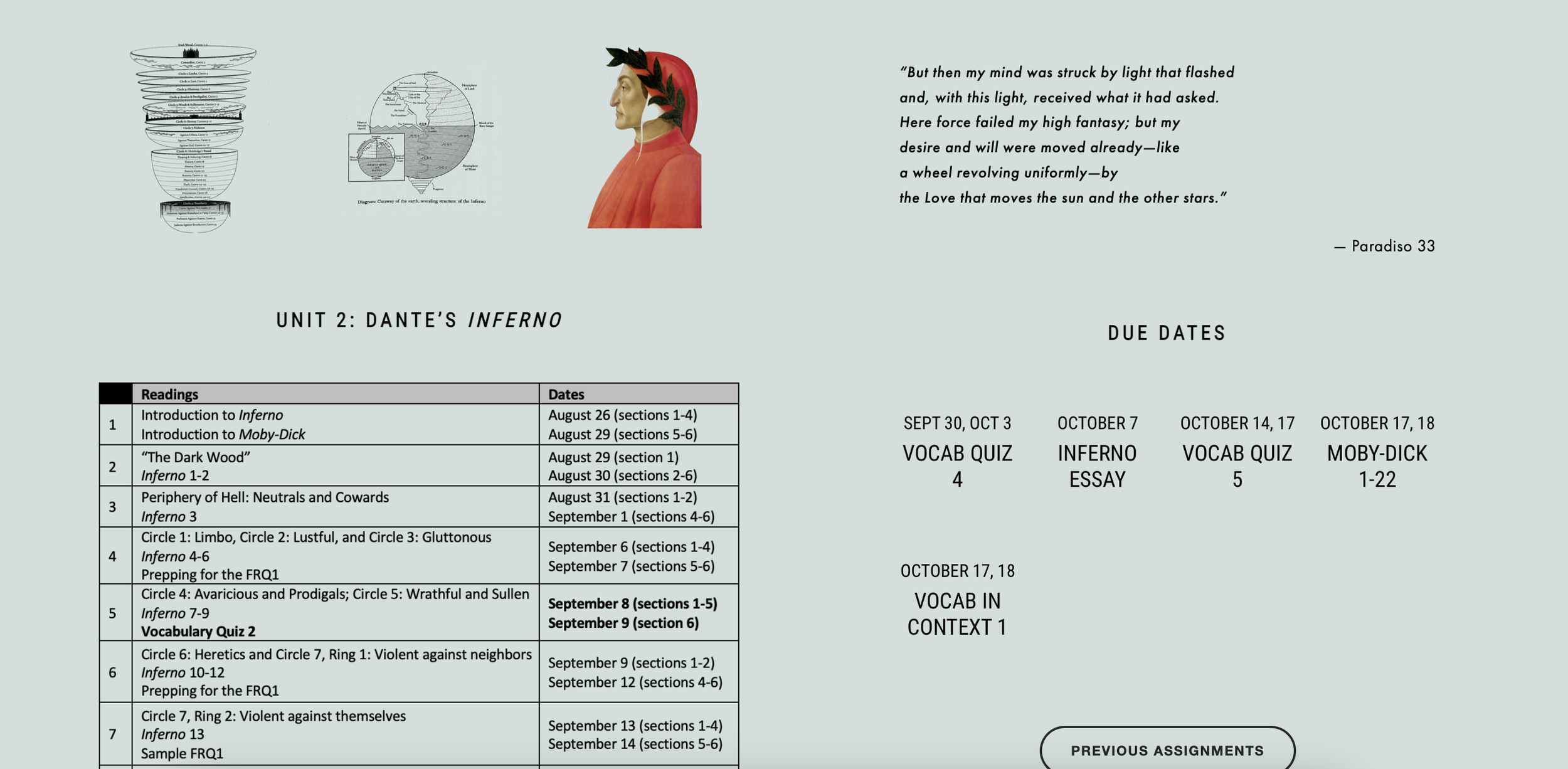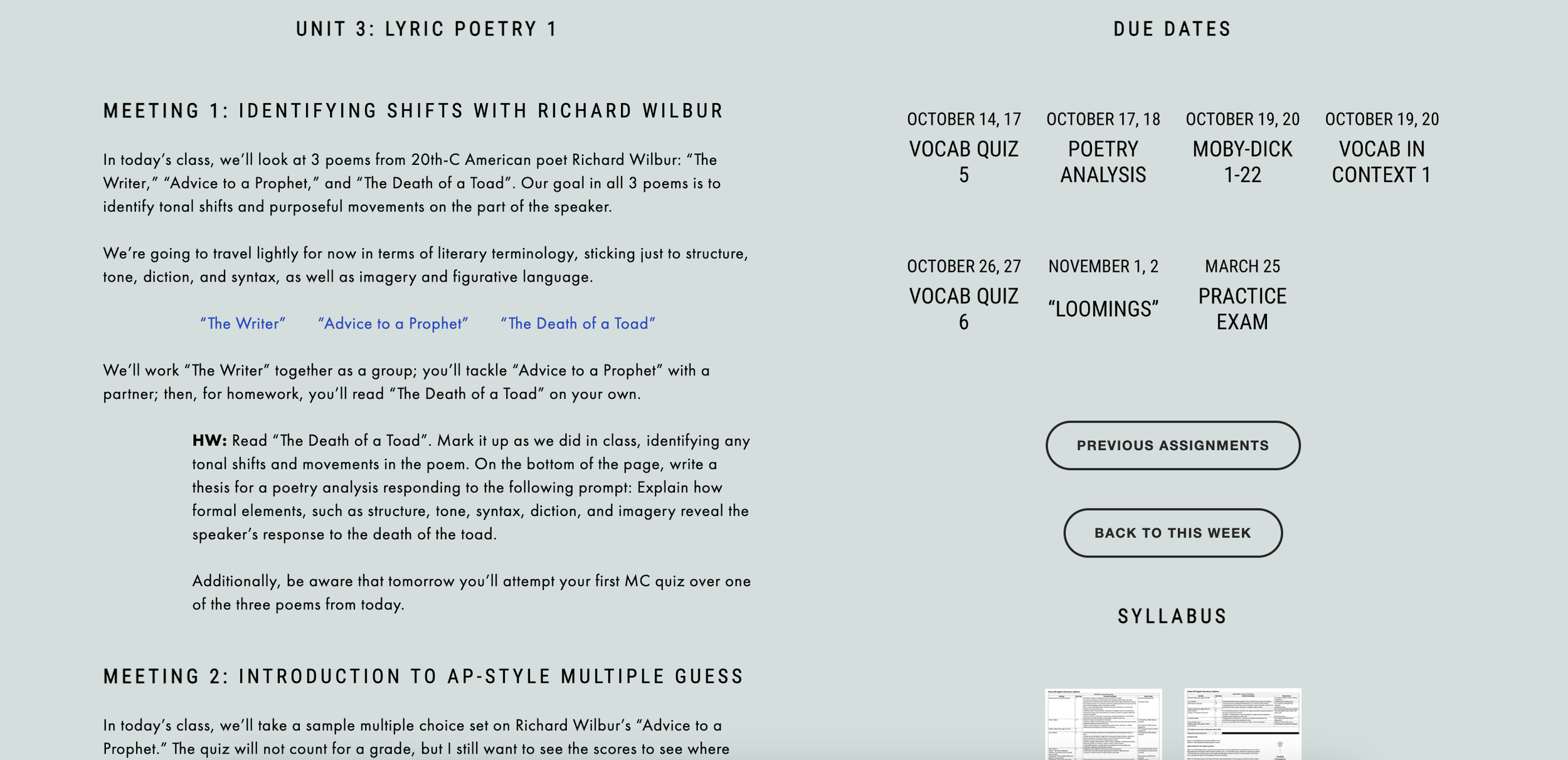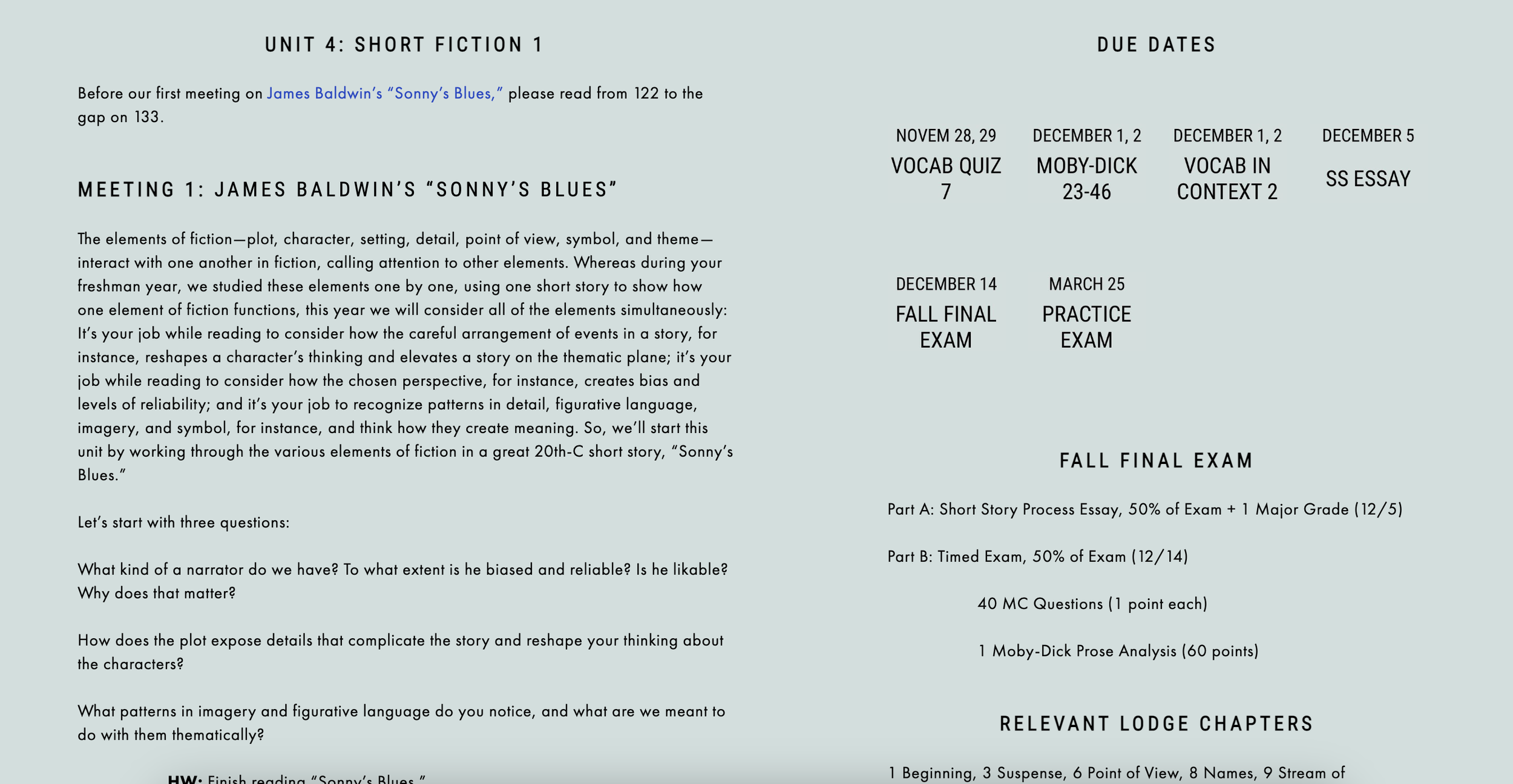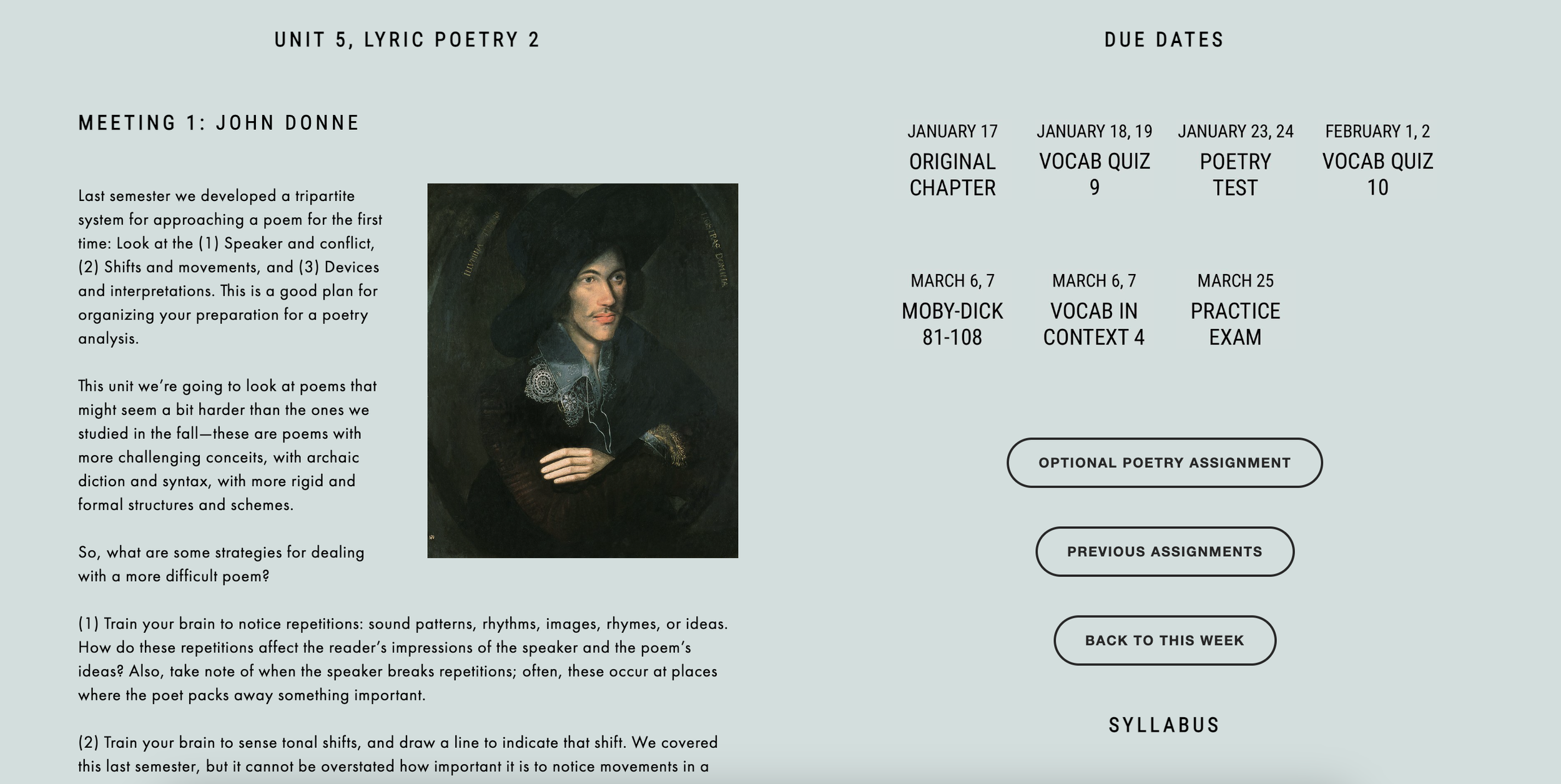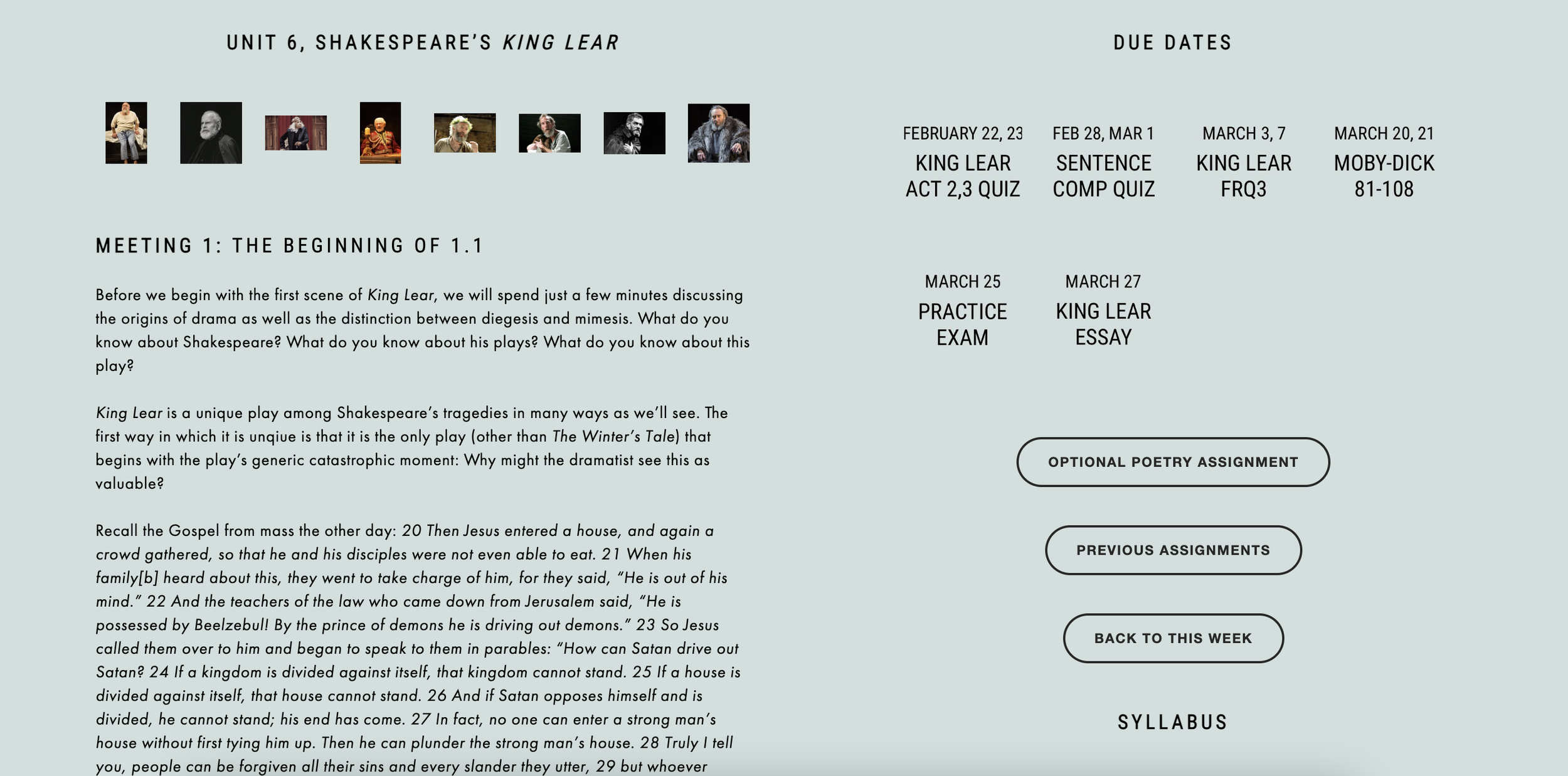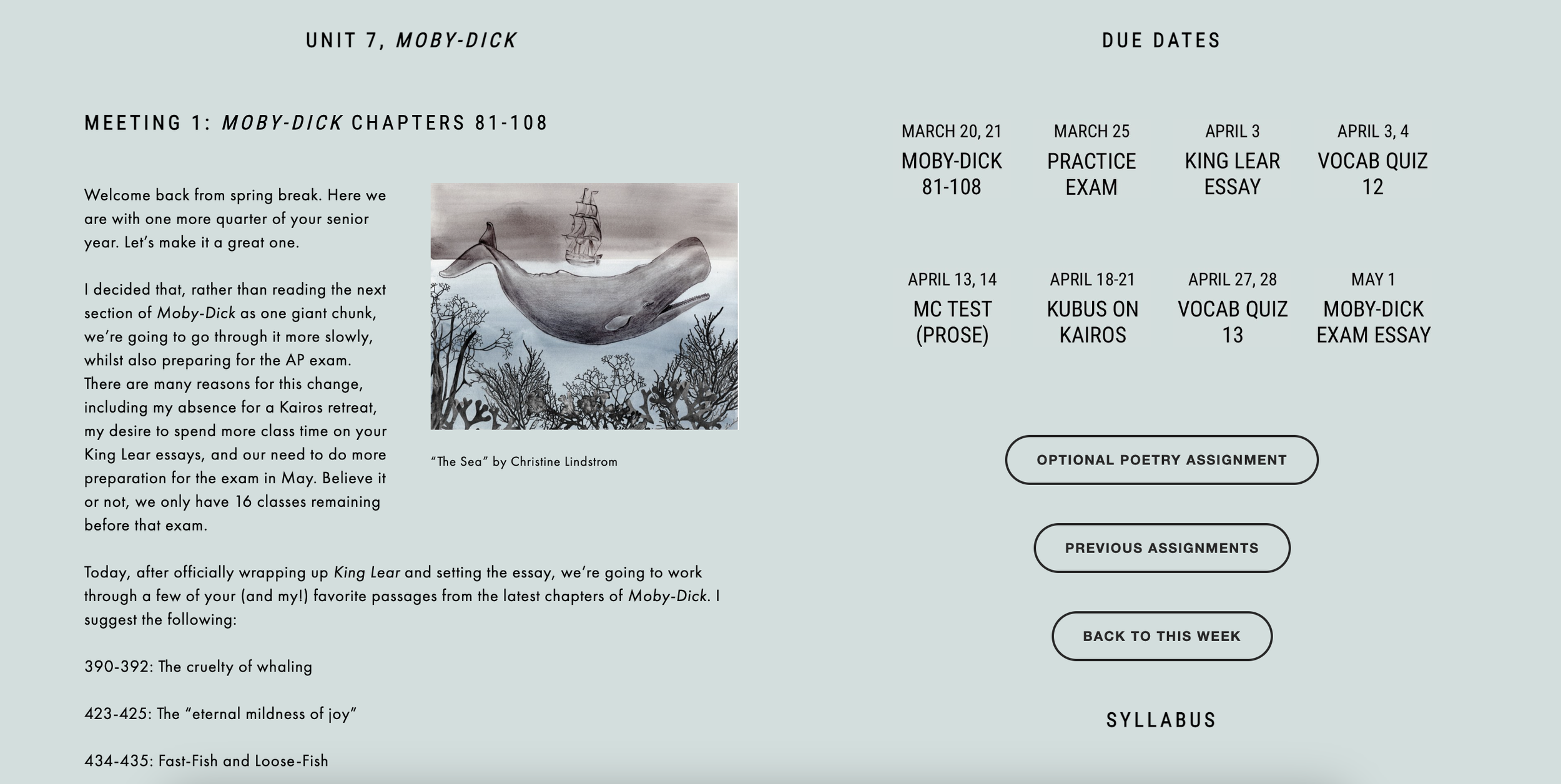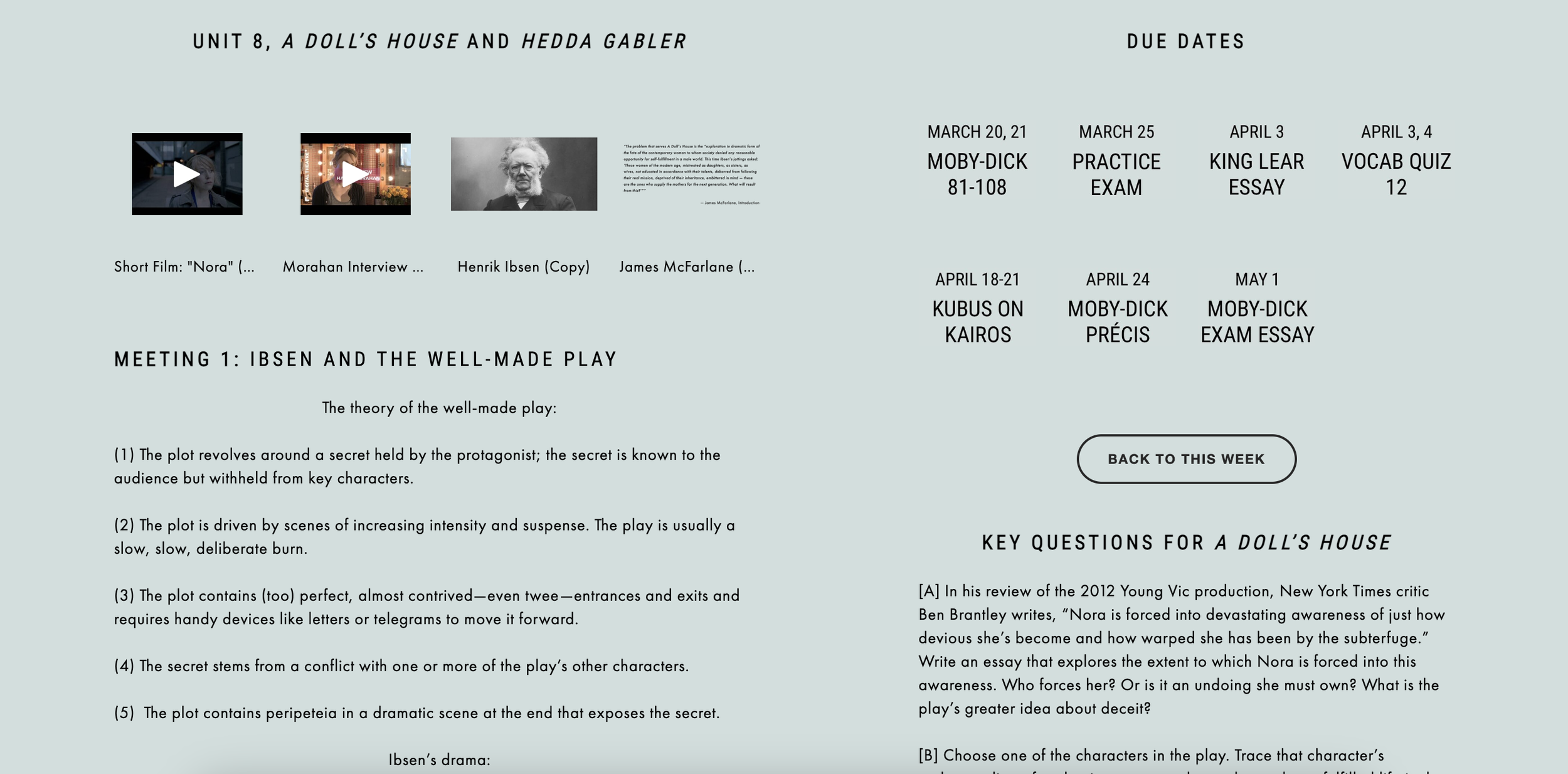unit 2, short fiction
Homework: Carefully read Hemingway’s “A Clean, Well-Lighted Place” in the Hemingway anthology, pages 288-91.
meeting 1: hemingway, “a clean, well-lighted place”
Hopper, “Nighthawks,” often thought to have been inspired by Hemingway’s “A Clean, Well-Lighted Place”
“If a writer of prose knows enough about what he is writing about, he may omit things that he knows, and the reader, if the writer is writing truly enough, will have a feeling of those things as strongly as though the writer had stated them. The dignity of movement of an iceberg is due to only one-eighth of it being above water. A writer who omits things because he does not know them only makes hollow places in his writing.” (Hemingway, Death in the Afternoon)
How do we know whether or not a writer does know what’s beneath the surface. How can a writer like Hemingway reveal the other 7/8 of what’s going on with just the 1/8 above the surface?
Take, for example, this passage from The Sun Also Rises, wherein two men, the protagonist and his friend, have a simple conversation while fishing. Bill tries to show Jake what exactly?
William Faulkner, Hemingway’s contemporary and fellow writer, once said of Hemingway, “He has no courage, has never crawled out on a limb. He has never been known to use a word that might cause the reader to check with a dictionary to see if it is properly used.” Point to a few examples in the story. Is Faulkner right, or is Hemingway’s rhetoric strong and compelling in its own way?
James Joyce, the other author we study during this unit, once remarked: "He [Hemingway] has reduced the veil between literature and life, which is what every writer strives to do. Have you read “A Clean Well-Lighted Place”?...It is masterly. Indeed, it is one of the best short stories ever written...”
Homework: Please read the following in order before our next class:
(1) “Repetition” in David Lodge’s The Art of Fiction. Then, go back to “A Clean, Well-Lighted Place” to identify a short passage with lexical patterns similar to the ones Lodge identifies in “In Another Country.” Is there a similar focus on sensory experience?
(2) “Araby” and “Eveline” in Joyce’s Dubliners, pages 19-29.
(3) “Epiphany” in David Lodge’s The Art of Fiction. Then, go back to “Araby” and “Eveline”. Find each story’s moment of epiphany. Characterize the verbal intensity Lodge suggests all epiphanies have.
meeting 2: joyce, “araby” and “eveline”
Today we’ll start with Lodge’s essay “Repetition.” Recall the passage below:
According to Lodge, how do the lexical and grammatical repetitions speak to what this passage attempts thematically?
Why pair “Araby” and “Eveline” together? What do they have in common stylistically? What do they have in common thematically? Select a lens through which you can view both of Joyce’s stories. Work together to make a claim that differentiates the stories thematically. Write it on the large Post-it to share with the rest of the class. You have 20 minutes.
David Lodge says that an epiphany is any passage in which “external reality is charged with a kind of transcendental significance for the perceiver.” He goes on to say that some might seem like an anticlimax, a moment of defeat or frustration. That seems right in Dubliners. What’s the realization in each epiphanic anticlimax?
Homework: Please read the following in order before our next class:
(1) “In Another Country” in the Hemingway anthology. It’s found on pages 206-10. ____________ will come with a passage to begin our discussion.
(2) “Point of View” and “Symbolism” in David Lodge’s The Art of Fiction. Find the sentence or sentences in each chapter you deem Lodge’s clearest expression of point of view and symbolism. Have those sentences ready to go at the beginning of our next class.
meeting 3: hemingway, “in another country” and “cat in the rain”
Hans Winter, “Chavrusa”
Sit today with your CHAVRUSA.
“In Another Country”: We begin today with your selected passage. Then we’ll turn to an unshakeable—for me, anyway—image in Hemingway’s “In Another Country”. In what ways does the image relate to other parts of the story? Is it a good symbol by Lodge’s definition (having “rich plurality”), or is it merely a metaphor? What idea does the symbol help build?
In the second half of class today, we’re going to read “Cat in the Rain” in six sections, in a style writer George Saunders recommends for approaching a new story for the first time. Divide your text as I indicate, and we’ll begin.
Homework:
(1) Prepare for your first vocabulary and sentence composition quiz.
(2) Read Hemingway’s “Hills Like White Elephants”, found on pages 211-4. It’s a masterpiece. We’ll also use it to introduce AP-style MCQs.
meeting 4: vocab quiz 1; hemingway, “hills like white elephants”
We’ll begin today with the first vocabulary and sentence composition assignment.
“Hills Like White Elephants” remains Hemingway’s most famous short story. It’s 95% dialogue. Which bits of the 5% of narration do you find most thematically relevant, and why? Walk through the story in terms of power dynamics. Who has the upper hand at various points in the story? At what point did you know what they were discussing?
MC Preview: Questions for your subconscious as you read: (1) What does the author set in motion? (2) How does the story expand? (3) What do you anticipate? (4) How does the story turn, and where? (5) Do you have any kind of a preference? (6) What?! —> Make sense of the ending.
meeting 5: MC QUIZ 1
Today we will dive headlong into AP-style MCQs.
Homework:
(1) Read Joyce’s “A Painful Case”, found on pages 89-97.
meeting 6: joyce, “a painful case”; prose analysis 1; set ss essay
Today we’ll begin by moving through the MCQs from the selection from Joyce’s A Portrait of the Artist as a Young Man.
After, we will use the same passage to introduce FRQ2: Prose Analysis.
Lastly, we’ll turn to Joyce’s “A Painful Case,” focusing mainly on our three elements of style: Tone, Diction, and Syntax.
Homework:
(1) Read the excerpt from Tim Winton’s novel Breath, marking it up as we did with the Joyce passage. Read the sample prose analysis thesis statements. Then write one of your own.
(2) Write a sample prose analysis thesis on the passage from Joyce’s A Portrait of the Artist as a Young Man. Here’s the prompt: “The following excerpt is from James Joyce’s A Portrait of the Artist as a Young Man. In the passage, the protagonist Stephen Dedalus, experiences an epiphany while standing on a shoreline. Read the passage carefully. Then, in a well-written essay, analyze how the author uses literary elements and techniques to develop Dedalus’s complex attitude toward his artistic destiny.”
(3) Read through the short story process essay assignment.
meeting 7: Prose analysis 2
Let’s begin today by working through the passage from Tim Winton’s 2008 novel Breath. What literary elements and techniques did you find, and how did you connect them to the complex response of the narrator to the incident.
Then, we will read aloud and grade your sample thesis statements. We will also read three sample prose analyses and work through the rubric to score them together.
Homework:
During our next class you’ll have your first timed writing of the year. Please make sure you re-read the very end of Joyce’s “A Painful Case” if you have not done so already. For this first prose analysis of the year, we will walk through the passage together; then, you’ll be released to plan and write your analysis in the remaining 40-45 minutes.
meeting 8: timed prose analysis
meeting 9: vocab quiz 2; prose analysis debrief
Today, after the vocabulary quiz, we’ll debrief last class’s prose analysis. So far, the results are impressive even with the scaffolding. Here is a doc with 7 of your thesis statements. We’ll grade them together.
At the end of class, I want to take questions about the short story process essay and look at a sample.
Homework:
Begin work on your short story process essay.
due DATES
The revision of your summer essay is due right after Labor Day weekend, either the 5th or the 6th of September, depending on when you have class. Post your essay to turnitin.com by 8am on your due date. Bring a stapled and properly formatted paper copy of the essay with Works Cited page. You’ll submit in class. The word count will be a range of 1200-2000. Should you finish before Labor Day weekend, you’re welcome, of course, to turn in the revision early, and I’ll gladly grade it over the long weekend.
CURRENT TEXTs TO HAVE DAILY
syllabus
cyclical vocabulary and sentence composition assignment
2023-2024 units
writing assignments
2022-2023 UNITS
war and peace central
It seems even Tolstoy didn’t quite know what War and Peace is: “It is not a novel,” he said, “still less an epic poem, still less a historical chronicle. War and Peace is what the author wanted and was able to express, in the form in which it is expressed.” And yet, it’s the first title we think of when we think of some of the greatest or most famous novels ever written. Whatever War and Peace is, it’s innovative: it plays with multiple languages, moves from battlefields to palaces to country estates, combines historical figures like Napoleon and Kutuzov with fictional characters like Bolkonsky and Rostov, folds in bloody battles to scenes of great personal strife and triumph, and changes narrators at will. That’s innovation. Whatever War and Peace is, it’s human: Tolstoy writes no archetypes, but people; no heroes, but soldiers; no villains, but sinners; no pillars of grace, but kind-hearted, flawed characters. That’s human. And whatever War and Peace is, it’s big: With almost 600—yes, 600—named characters, more than 1300 pages, multiple shifts in narrative voice, oscillations between scenes of aristocratic drama and the history of the Napoleonic Wars and some of Tolstoy’s personal philosophy, it’s no wonder Henry James famously called War and Peace “a big, loose, baggy monster.”
Once a month, a small group of us will have a meeting to discuss the next section of the novel, spending a few consecutive days after school with conversation, food, and drink. I hope it’ll be something you really enjoy despite the obstacles of the novel. But don’t let those obstacles prevent you from working through it. Look, I get it: the names are hard, and like I said, there are a lot of them. And look, I get it: Looking at the footnotes to translate the French is annoying. And look, I get it: there are some parts that are just plain dull. It’s okay. Sometimes long-form fiction will be like that. But you’ll do your work, anyway, like the great student and person you are. There are many reasons to set this book down and move on with your life, but there are more reasons—some you may not understand for a few years—to continue working your way through. It’s a work of art filled with beautiful characters, intricately woven threads of plot, thrilling scenes, compelling relationships, people to root for and against. The natural barriers of the novel are nothing compared to the reward on the other side. You’ll be just fine—better than fine, really. And you’re reading in a community of like-minded readers with great opinions to encourage you through it.













